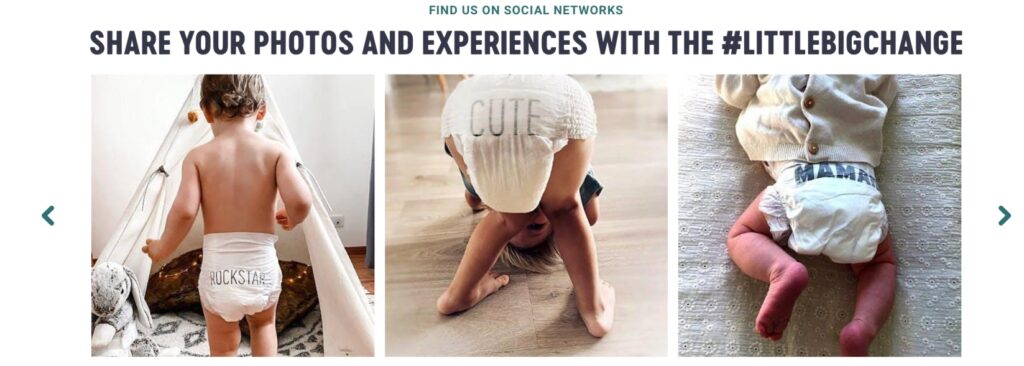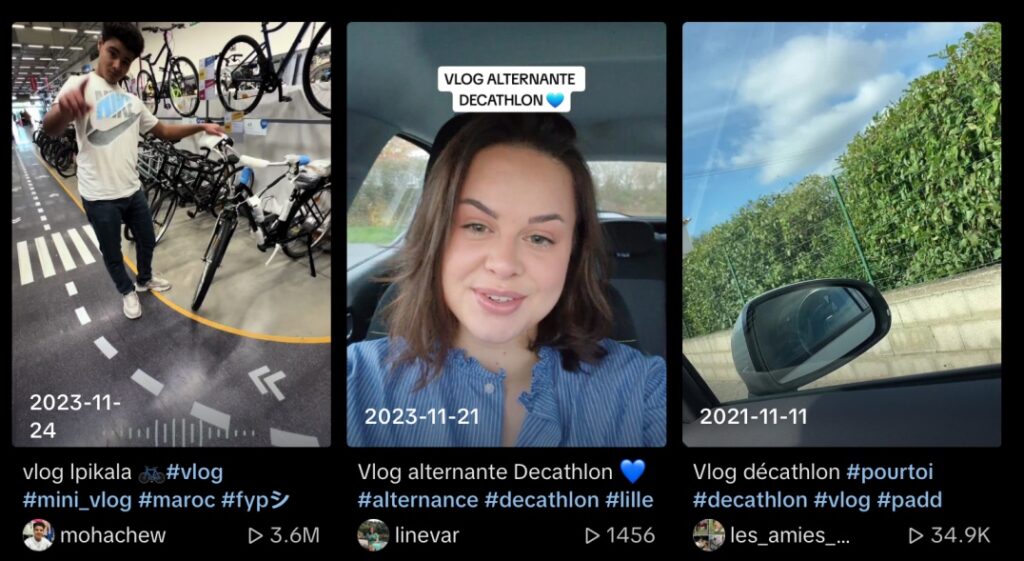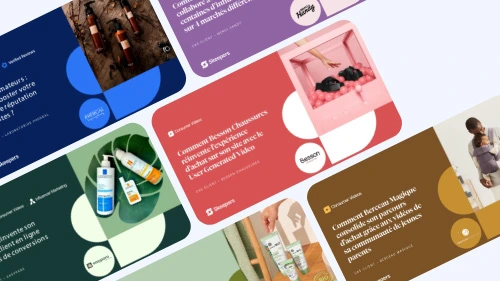Add-to-cart rates serve as a critical metric in e-commerce, representing the percentage of website visitors who add items to their shopping carts compared to the total number of visitors. It’s a key indicator of user intent and interest in purchasing products, directly impacting conversion rates and revenue generation for online businesses. Understanding and optimizing add-to-cart...
Add-to-cart rates serve as a critical metric in e-commerce, representing the percentage of website visitors who add items to their shopping carts compared to the total number of visitors. It’s a key indicator of user intent and interest in purchasing products, directly impacting conversion rates and revenue generation for online businesses. Understanding and optimizing add-to-cart rates is essential for e-commerce success, as it reflects the effectiveness of the website’s design, product presentation, and overall user experience. User-generated content (UGC) encompasses any content created by users or customers rather than the brand itself. This includes reviews, ratings, testimonials, photos, videos, and social media posts shared by consumers about their experiences with products or services.
UGC has gained significant traction in e-commerce due to its authentic nature and its ability to influence consumer purchasing decisions. When strategically incorporated, UGC can have a profound impact on add-to-cart rates by providing social proof, building trust, and enhancing the overall shopping experience for potential buyers.
Types of UGC that can influence add-to-cart rates
25% of search results for the largest brands globally consist of user-generated content (UGC) in some form. Customer reviews and ratings are among the most impactful forms of UGC, as they offer first hand feedback on product performance, features, and overall satisfaction.
User-generated photos and videos showcasing products in real-life settings provide visual evidence of product quality and functionality, resonating with potential buyers on a more emotional level. Social media posts and endorsements from satisfied customers further amplify the reach and impact of UGC, encouraging others to explore and engage with the brand’s offerings. By leveraging diverse forms of UGC, e-commerce businesses can effectively enhance their add-to-cart rates and drive conversions.
Factors Influencing Add-to-Cart Rates
User-generated content (UGC) plays a crucial role in building trust and credibility with potential customers. Unlike branded content, which may be perceived as biased or promotional, UGC comes directly from fellow consumers who have firsthand experience with the product. When UGC is introduced on product pages, conversion rates increase by 2-4 times.
Social Proof
Social proof plays a pivotal role in influencing consumer purchasing behavior. When shoppers see positive feedback from other customers in the form of reviews, ratings, and testimonials, they are more likely to trust the quality and reliability of the product. This social validation reassures potential buyers that they are making a wise decision, leading to higher add-to-cart rates and ultimately, conversions.

Little Big Change recognized that the most effective method to engage its audience and introduce them to its offerings was by allowing its current customers to speak for the brand. Enlisting its top advocates, the brand encouraged them to share their experiences on video and showcase the products.
The brand observed that, on average, viewers watched 71% of the video content, and each visitor watched more than 3 videos before making a purchase. This strategy successfully reassured potential buyers by providing them with social proof and relatable content, thus accomplishing the brand’s objective of instilling confidence in their purchase decisions.
Visual Content
Visual content has a profound impact on product desirability and conversion rates in e-commerce. High-quality images and videos showcasing products from various angles and perspectives provide consumers with a better understanding of the product’s features, functionality, and appearance. User-generated photos and videos, in particular, offer authentic representations of how products look and perform in real-life settings, making them more relatable and compelling to potential buyers. As a result, engaging visual content can capture the attention of shoppers and motivate them to add items to their carts.

In an effort to incorporate 50% UGC, Decathlon opted to utilize videos crafted by their community of customers to infuse a personal element into their product pages. Collaborating with Skeepers, the brand engaged its customer base and encouraged them to produce videos, which were subsequently featured on the product pages of the website, tailored for optimal e-commerce presentation.
Nearly one in three customers, reached via email, signed up on the platform to create videos, resulting in a total of 2,500 customers enrolling to produce videos within the initial two months creating a positive impact on sales.
Authenticity
Authentic reviews, testimonials, and social media posts from satisfied customers serve as valuable endorsements that validate the brand’s claims and offerings. By incorporating UGC into their e-commerce platforms, businesses can establish a sense of transparency and authenticity that resonates with potential buyers, ultimately increasing add-to-cart rates and driving conversions.

Living Proof collaborated with Skeepers to create authentic UGC experiences for its audience. Their objective was to highlight genuine hair challenges encountered by real individuals and deviate from the unrealistic hair care content on social media.
The brand engaged a diverse array of influencers from various backgrounds, empowering them to produce genuine content that addresses authentic hair care concerns for their followers. This initiative garnered an impressive response, generating over 5,800 assets and 1.45 million interactions, significantly impacting their conversions.
Implementing UGC Strategies
Drive Traffic to Product Pages with UGC
Utilize UGC effectively across various platforms, including company blogs, email campaigns, and social media channels, to direct traffic to your product pages. Implement specific strategies such as featuring UGC in blog posts with compelling call-to-action buttons leading to product pages. In email campaigns, showcase UGC alongside product recommendations to encourage click-throughs. Leverage the interactive nature of social media by posting engaging UGC and providing direct links to relevant product pages.
Enhance Product Pages with Visual UGC
Encourage users to share visual UGC, such as photos and videos, by initiating branded hashtag campaigns and hosting contests with attractive prizes. Integrate this visual content seamlessly into product pages to create an immersive shopping experience. Utilize interactive elements such as sliders or galleries to showcase a variety of UGC, allowing visitors to visualize products in real-life scenarios. Provide clear CTAs on product pages to prompt users to add items to their carts directly from the UGC display.
Showcase Customer Reviews Effectively
Elevate the visibility of customer reviews on product pages by strategically placing star ratings alongside product images. Implement features that allow users to easily access and read full reviews, empowering them to make informed purchase decisions. Encourage customers to leave detailed reviews by offering incentives or rewards for their feedback. Additionally, highlight positive reviews and testimonials prominently on product pages to nurture confidence and credibility in your brand and products.
Cultivate Engagement with Brand Loyalists
Foster a strong sense of community and appreciation among your brand’s loyal supporters by actively engaging with them on social media platforms. Recognize and reward their contributions by featuring their UGC in brand-related content and acknowledging their efforts publicly. Encourage ongoing participation through exclusive offers, sneak peeks, and personalized interactions. Create opportunities for brand loyalists to become advocates by providing them with exclusive perks and privileges, such as early access to new products or VIP events. By nurturing these relationships, you can turn loyal customers into brand ambassadors who drive word-of-mouth referrals and contribute to increased add-to-cart rates.
Conclusion
The future potential of UGC in e-commerce growth is promising, as its influence on add-to-cart rates continues to evolve and expand. With consumers increasingly relying on authentic content and social proof to inform their purchasing decisions, UGC is poised to play an even more significant role in shaping the e-commerce landscape.
As brands continue to harness the power of UGC to elevate their add-to-cart rates, it’s essential to remain agile and innovative in adapting to emerging trends and consumer preferences. By prioritizing UGC strategies, brands can position themselves for sustained success in driving higher conversion rates, fostering customer trust and loyalty, and ultimately, achieving their e-commerce growth objectives.













